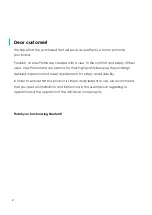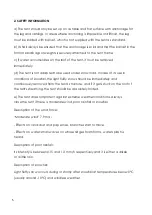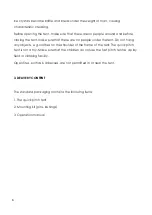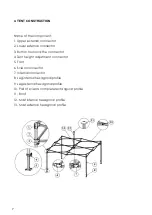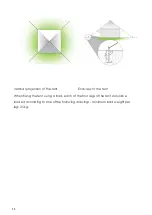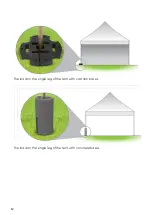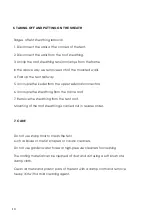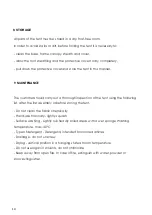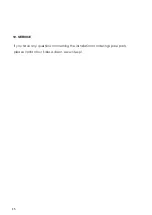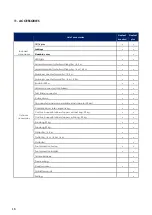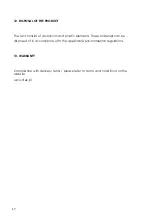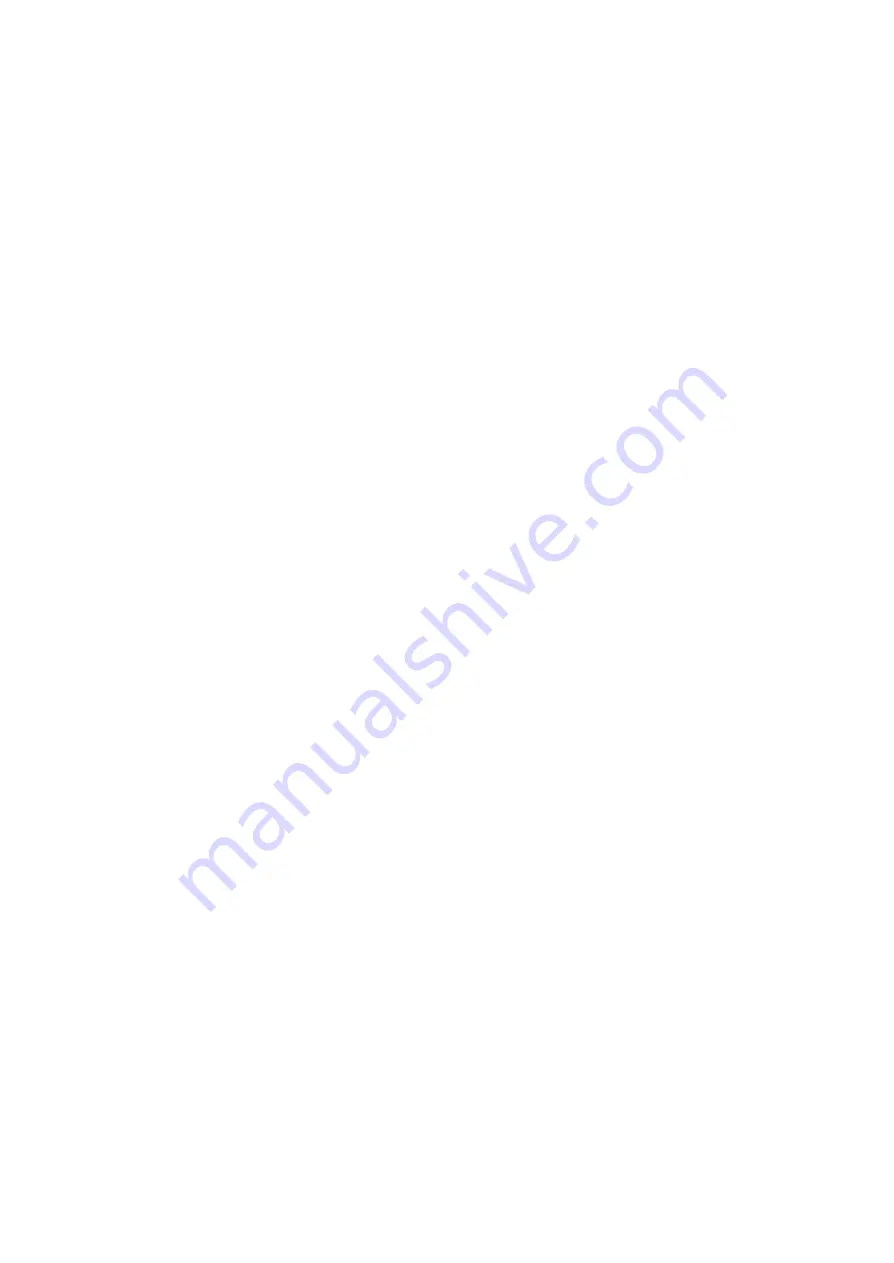
5
2. SAFETY INFORMATION
a) The tent should only be set up on a stable and flat surface with anchorage for
the leg and lashings. In areas where anchoring is impossible or difficult, the leg
must be loaded with ballast, which is not supplied with the tent as standard.
b) It shall always be ensured that the anchorage is solid and that the ballast in the
form of sandbags or weights is securely attached to the tent frame.
c) If water accumulates on the roof of the tent, it must be removed
immediately.
(d) The tent is not adapted to be used under snow load. In case of its use in
conditions of snowfall, the light fluffy snow should be immediately and
continuously removed from the tent's structure, and if it gets stuck on the roof of
the tent's sheathing, the tent should be absolutely folded.
e) The tent does not protect against extreme weather conditions. Always
close the tent if there is moderate wind, poor rainfall or snowfall.
Description of the wind force:
“Moderate wind" 7.9 m/s.:
- Effects on land: dust and paper rise, branches start to move.
- Effects on water: small waves on whose ridges foam forms, water splash is
heard.
Description of poor rainfall:
Its intensity is between 0.15 and 1.3 mm/h respectively and it is either a drizzle
or a little rain.
Description of snowfall:
Light fluffy snow occurs during or shortly after snowfall at temperatures below 0°C
(usually around -
10°C) and windless weather.


